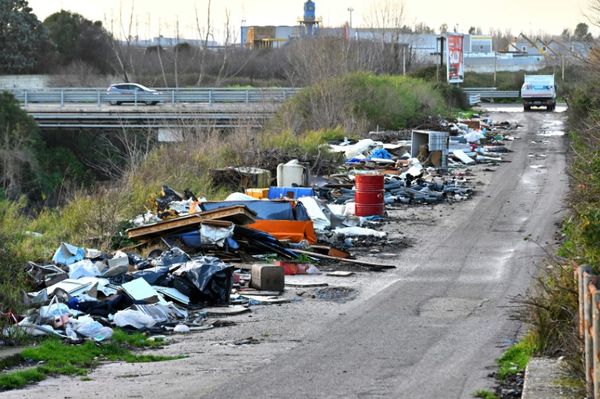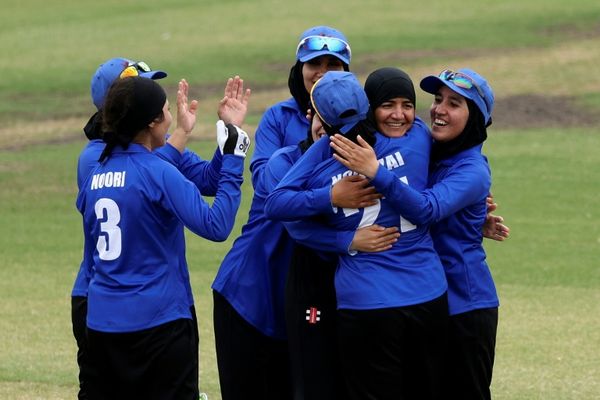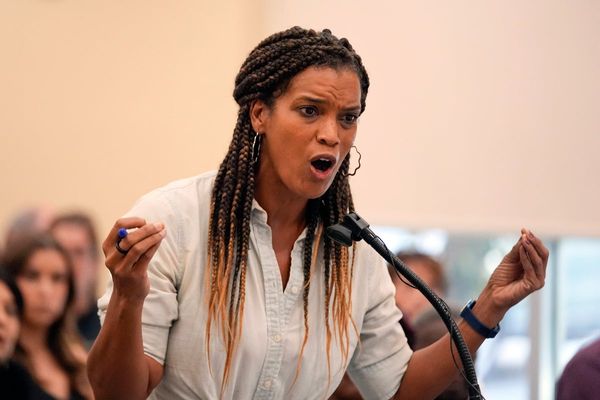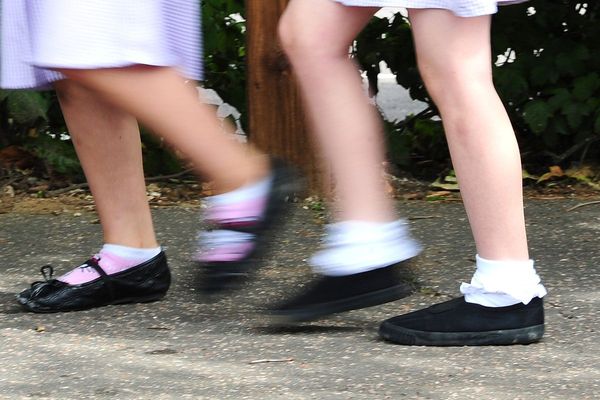
These editorial guidelines have been established for anyone who writes for Crikey — they’re also an opportunity for our readers to take an extra peek under the hood.
Crikey is already subject to our publisher Private Media’s code of conduct, which is modelled on the MEAA code of ethics. But we want to delve into greater detail about what informs our decisions as editors — to provide clarity for our writers, be upfront with our readers, and help inform internal decisions and arguments (of which there are many).
Crikey publishes a mix of reportage, analysis, opinion and investigations, with rolling coverage across each day. Compared to standard newsrooms, the Crikey team remains relatively small. Yet we’re a very different outfit than two decades ago, when the publication was put together in founder Stephen Mayne’s lounge room, published several times a day, traded off the novelty of being solely online (and an e-newsletter at that), and was regularly dismissed or revered as a shit sheet.
Over the years, we’ve grown our readership exponentially and, as a result, have expanded our team and become more ambitious. With that growth has come greater responsibilities to accuracy and ethical judgment — Crikey is more rigorously edited than it once was. But we’re always mindful of staying true to our original ethos: to inform, challenge and surprise readers with a wholly independent mix of coverage that maps out how power works, provides context, and pushes the conversation forward.
No single list of guiding principles can cover all the decisions that formulate an edition of Crikey. As in all newsrooms, there are some calls that go to judgment, and gut, and we recognise that there have been times when Crikey has got it wrong. We can’t guarantee that we won’t make mistakes in the future, but we can commit to being as transparent as possible about them. (To be clear, these guidelines aren’t retrospective.)
Our readers trust us to publish a plurality of perspectives and to continue to challenge. On a good day, Crikey should be illuminating, unpredictable, occasionally infuriating and often contradictory. We don’t shy away from perspectives that might be uncomfortable or unpopular, and neither do we seek to harm unfairly or maliciously. Crikey routinely writes about power; we call it out and highlight hypocrisy. We don’t pull punches, but we never seek to punch down.
Crikey’s readers are unique — they are a community of heavily invested subscribers who believe passionately in supporting independent media. They’re often very vocal, and will always tell us when they’re pissed off (equally they quite like to be irritated by us, at least some of the time). They trust us to challenge them, they abhor spin, and won’t tolerate excuses. They demand accountability, and it’s on us to explain ourselves.
We’re lucky to have them and respect their loyalty to the publication, especially as digital media has changed rapidly over the years. When Crikey started back in 2000, our direct line to our audience as an email newsletter stood in stark contrast to the mainstream media, whose relationship to their readers remained relegated to the letters page. We then witnessed how social media dramatically changed the dynamic again between media and audience, establishing it as more of a two-way conversation — and yelling match.
Today, newsrooms and readers are grappling with issues like the impact of misinformation and the advent of artificial intelligence. Some of the most sticky arguments are those taking place within newsrooms, with traditional journalistic notions of balance, objectivity and neutrality being continually challenged. What does good journalism mean? What is it worth? How do we consistently reestablish the trust of readers?
These editorial guidelines are the first instalment in a semi-regular series we’ll be rolling out called Crikey Insider, taking readers inside the newsroom to cover everything from the latest resourcing decisions, to revisions to our corrections policy, to updates from reporters, to grappling with some of the curlier stuff.
This is a rolling document. We’ll be constantly reviewing processes and we’ll add to this list over time, always making it clear that we’ve added or amended something and why. We invite our subscribers to weigh in, ask us questions and tell us what you want to hear more about. We may not always have every answer, but we’ll endeavour to be as open as possible.
THE OFFICIAL STUFF
Crikey’s commitment to codes of conduct and ethics.
What is the Private Media code of conduct?
Our publisher, Private Media, and therefore all editorial staff under its umbrella, abides by the code of ethics developed by the Media and Entertainment Arts Alliance (MEAA). The code of ethics applies across all platforms, including social media. In broad strokes, it straddles everything from accuracy, to use of sources, to attribution, corrections, privacy and conflicts of interest. You can read Private Media’s full code of conduct here. All of this is qualified by the recognition that basic values often need interpretation and sometimes come into conflict. Ethical journalism requires conscientious decision-making in context. Only substantial advancement of the public interest or risk of substantial harm to people allows any standard to be overridden.
What happens if a journalist or contributor breaches the code?
Where a journalist or contributor is found to have breached the Private Media code of conduct, a range of actions could be taken, including further training, formal performance management, or termination.
Are we a member of the Press Council?
Crikey is bound by the standards of practice of the Australian Press Council. If people are unsatisfied with the response to their complaint by our editorial team, they can approach the council to seek resolution.
MAKING MISTAKES
Like all news organisations, Crikey rigorously fact-checks its articles, but sometimes gets things wrong. We have a fierce commitment to transparency around our mistakes. Here’s our process that kicks in when we slip up.
What is Crikey’s corrections policy?
We correct errors as quickly and fulsomely as possible and also issue clarifications. When we change copy, we denote what we’ve changed underneath the relevant story on the website and clearly mark it as either a correction or a clarification. Readers can alert us to factual errors, complaints or any other tips to help improve future coverage by using this form. Subjects of a story or sources can get in touch with the individual reporter, or contact our editors directly. Journalists have a duty to cooperate frankly and openly with the editor about any problems and to report errors. Freelancers are also bound by this duty. Reporters and editors will work together to land on a correction or clarification before it’s published.
TRANSPARENCY
Part of Crikey’s ethos is to provide context about the news our readers are consuming. We also aim to bring that approach to our coverage.
What is our approach to disclosing personal interests or potential conflicts of interest?
Writers and editors should disclose if they have a financial or personal stake in the issue they’re covering — total transparency should be the guiding principle. Reporters or contributors should ask themselves if they have a conflict of interest when considering a story. If they do, they should disclose it within the story, or down the bottom in a few clearly marked lines, or both. If unsure, reporters and contributors should check with their editor about whether disclosure is enough, or whether the story should be reassigned. When in doubt, it’s always better to disclose, as readers always appreciate it.
THE FINE PRINT
How we deal with sources, reporting processes, plagiarism and more.
When and why do we agree to grant anonymity to sources?
Reporters and contributors should always try to get a source on the record before agreeing to grant anonymity. Where possible, writers should explain to readers why their source is anonymous. Likewise, where possible, writers should share the source’s identity with their editor, unless it’s a special case that the writer is able to articulate to the editor. Where anonymity is granted, reporters and contributors should take precautions not to reveal the identity of confidential sources, including avoiding putting a source’s name in writing on unsecured channels.
How do we try to protect the confidentiality of our sources?
If our journalists commit to confidentiality for a source, that confidentiality will be protected to the utmost of our ability. However, any use of information and communications technology comes with an inherent risk of breach of information, however small — one that is impossible to entirely rule out by the nature of that technology. Crikey takes cybersecurity seriously and encourages its journalists to use best-practice communications methods that maximise the security of information exchanged via those methods, and provides tips for would-be sources about how to do the same.
Do we pay for interviews or information?
No. We do consider paying researchers on a case-by-case basis.
How do we identify ourselves when seeking to speak to people for a story?
Reporters and contributors should state up front that they are journalists or commentators and are interested in speaking first and foremost on the record about a story.
What is our policy on plagiarism?
Reporters, writers and contributors should not cut and paste information and pass it up wholesale as their own. Sources should always be credited with a link where possible.
What is our policy on the use of artificial intelligence?
The short answer is we don’t have an official one yet, but we’re working on it. For now, we don’t utilise AI (except for using AI to generate graphics about stories to do with… AI) and expect contributors and in-house staff to do the same. If in doubt, ask us.
What is our policy on ‘personal gain’?
Reporters and contributors mustn’t request or accept inducements of money, goods, discounts or hospitality of any kind outside the normal scope of business hospitality.
Do we let story sources or interview subjects approve copy or quotes?
Reporters and contributors are discouraged from providing sources or interview subjects with quotes for their approval. If a reporter is unclear on something, they’re encouraged to check with the source or subject over the phone. If they want to double-check their work, a reporter or contributor may choose to call or email a source and describe how they’re quoted in a story. No-one should be sent a story or copy for approval pre-publication. In some special circumstances we may allow people to see quotes — for example in the rare instance when a victim-survivor or sensitive case study is involved in a story — but we’re not required to alter copy at anyone’s request. Reporters and contributors should never change direct quotes to alter their context or meaning.
THE EDITING PROCESS
How Crikey editors work on stories written by reporters and contributors.
Do we fact-check?
Everything Crikey publishes is fact-checked. Same-day fact-checking is provided for daily features and analysis, whereas more in-depth fact-checking takes place across several days for investigative projects or lengthier features — for both in-house reporters and contributors. Reporters are expected to be accurate, and editors are expected to flag any questions they have for their writers before publishing. We don’t state as fact information about or from someone who we cannot authenticate. Confidence about sources is the responsibility of editors as well as reporters and contributors, and subeditors should feel free to challenge the dependability of information.
What are considered legitimate sources of information?
Information cited within stories and analysis or used to inform thinking should come from a verified source such as research by experts, interviews, legal documents, academic journals, stories from news organisations (with attribution) and databases. Websites that other people can edit, such as Wikipedia, shouldn’t be used as sources.
What is our approach to opinion pieces?
Crikey clearly labels opinion and analysis as distinct from our news and investigations. We publish a range of opinions, some challenging, which we believe have been written in good faith and add a unique voice to the national conversation. We don’t endorse every view we publish as we welcome commentary from people with a wide range of perspectives, but we’re not a home for spin, misinformation or malice.
TOOLS OF THE TRADE
Most of the people we write about are public figures, but not all. Here are some broad considerations that help inform how we write about people and sensitive topics.
How do we respect personal privacy?
Where there’s a legitimate expectation of privacy, journalists and editors should be able to articulate why an infringement of privacy is justified in the public interest. When it comes to intruding on people in the midst of shock or grief, particular care must be taken. This involves refraining from publishing information or images that are unnecessary, especially those which are likely to cause further emotional harm. When engaging with minors, no children aged 17 or under should be interviewed or photographed without consent from an appropriate parental guardian.
What is our line on reporting or writing about personal characteristics?
The MEAA code of ethics states that journalists and contributors should not “place unnecessary emphasis on personal characteristics, including race, ethnicity, nationality, gender, age, sexual orientation, family relationships, religious belief, or physical or intellectual disability”. Given “unnecessary emphasis” can be subjective, Crikey utilises best practice guidelines such as Our Watch or the MEAA guidelines. Crikey reporters and contributors should always consider whether any personal characteristic is relevant to a story. If it isn’t, don’t include it.
How do we report on discrimination and incitement to hatred?
As per the MEAA guidelines on reporting on hate speech and extremism, Crikey has a strict policy on reporting related to race, religion, culture and ethnicity, and ensures that while journalism may be provocative, it should never vilify. Guidelines for reporters and contributors include but are not limited to: considering whether a person’s race, religion, culture and ethnicity are relevant to a story; avoiding outdated, derogative or stigmatising language; never presuming an individual’s background; not publishing quotes that broadcast hate speech; avoiding hyperlinking and mentioning where possible any organisations advocating for discrimination and/or hate speech; and avoiding platforming extremists’ words and actions when they are seeking media coverage to expand their reach. If any writer or contributor wishes for more advice on these matters, always consult your relevant editor or an MEAA representative.
How do we report on suicide and mental health?
As per Mindframe’s media guidelines for reporting on suicide and mental health, reporters and contributors must always write about these matters with care. Regarding suicide, this involves using safe and inclusive language, omitting all references to and images of method and location details, ensuring all information included is accurate, taking care when interviewing people with lived experience, applying any specific cultural considerations, and placing the story in context. Regarding mental health, this involves considering whether an individual’s mental health is relevant to the story, avoiding stigmatising language and terminology, ensuring the representation of the mental illness is fair and balanced, and seeking out expert opinion on the subject. All articles mentioning suicide and severe cases of mental illness must have support lines at the bottom for anyone seeking information and/or assistance.
How do we report about First Nations peoples, cultures, traditions and history?
Australia is home to more than 200 Indigenous nations, within which there is a rich diversity of varying languages, traditions and cultural protocols. As such, there is no one-size-fits-all method for reporting on Indigenous affairs, and writers should always be alert to this. However, Crikey follows specific style choices that respect the importance of First Nations cultural protocols and relationships with Country, and has established a general set of guidelines for reporters and contributors. These involve considering language and terminology; recognising and not disrespecting the diversity and history of First Nations peoples, cultures and traditions; consulting a breadth of First Nations perspective wherever possible; appropriately using images and contextual framing in articles; and ensuring that sources, information and images used have been provided with permission by the relevant people. Crikey also always specifies when an article depicts or mentions in writing a deceased First Nations person, out of respect for cultural protocols.
How do we report on gendered violence and sexual violence?
Crikey aims to report on gendered violence and sexual violence in keeping with the Our Watch guidelines, which were developed in consultation with representatives of the media and organisations working to address violence against women. We do not victim-blame, we prioritise survivors’ safety, and we use evidence-based language. These considerations should apply to everything from headlines to image selection. All articles reporting on gendered violence must rely on evidence-based information, so that readers can be best informed on who is affected by it, its causes, and how it can be prevented, and must include support lines at the bottom for anyone seeking information and/or assistance.
How do we report on stories relating to diverse sexual orientations, gender identities and sex characteristics?
In relevant articles, the Australian Press Council’s advisory guidelines should be front of mind, including but not limited to: considering whether a person’s sexual orientation, gender identity, and/or sex characteristics are relevant to a story and in the public interest; that a story includes relevant factual information and context and is not misleading; that relevant academic resources and expert opinion are used wherever possible; that reasonable steps are taken to avoid causing or contributing materially to substantial offence, distress or prejudice, or a substantial risk to health or safety; that writers or sources do not deadname or misgender a transgender person; and that stereotyping, stigmatising and derogatory language is avoided.
How do we report on disability?
As per the Media Diversity disability handbook, reporters and contributors should be guided by several approaches. These include but are not limited to: including the perspective of any person with a disability that is relevant to a story; avoiding using stigmatising, stereotyping and derogatory language; if working with a person with a disability, asking how they wish to be referred to; using images that reflect the diversity of disabilities and that avoid clichéd stereotypes.







